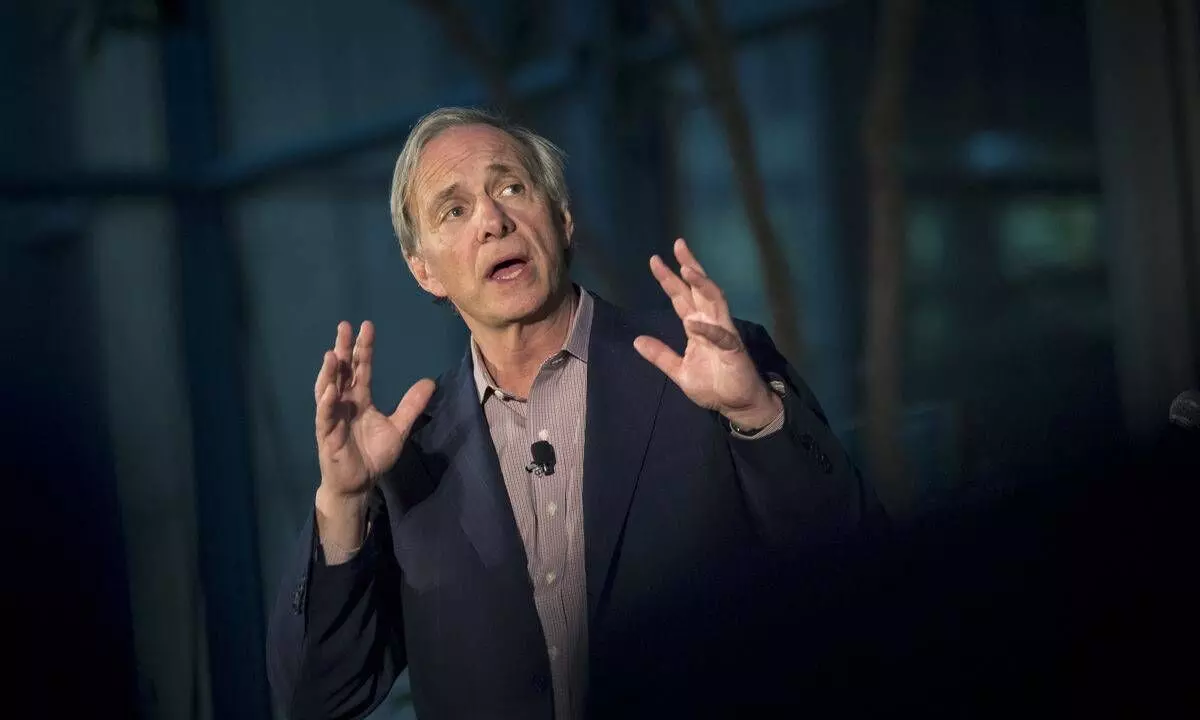Ray Dalio closes the frontier for Hedge Funds: Aaron Brown
Alfred Winslow Jones founded the first hedge fund in 1949 for a few wealthy friends. Imitators came along, 140 by 1970 by one count, but George Soros founded the first of the great modern funds in 1970. Ten years later, Julian Robertson founded Tiger Management. Halfway in between, Ray Dalio opened Bridgewater Associates. Soros closed his fund to the public in 2011; Robertson died in August; and Ray Dalio just announced he is stepping back from Bridgewater.
image for illustrative purpose

Alfred Winslow Jones founded the first hedge fund in 1949 for a few wealthy friends. Imitators came along, 140 by 1970 by one count, but George Soros founded the first of the great modern funds in 1970. Ten years later, Julian Robertson founded Tiger Management. Halfway in between, Ray Dalio opened Bridgewater Associates. Soros closed his fund to the public in 2011; Robertson died in August; and Ray Dalio just announced he is stepping back from Bridgewater.
These three pioneers still represent three stereotypes of hedge fund masters of the universe: Soros the bold gambler eager to play no-limit poker with governments and global financial institutions, trusting his backaches to warn him of danger, not his eyes or his brain; Robertson the great teacher, sending his Tiger cubs out to sort good companies from bad ones and build low-risk hedged portfolios; Dalio selling a process based on theory and quantitative methods that relied on diversification, not gambling, hedging or individual inspiration.
In one sense, this is just aging. All three managers are well past normal retirement age. Dalio, the baby of the group, is 73; Robertson died at 90; and Soros is 92. Each of them has many former employees and imitators to carry on their styles. Dalio and Soros wrote influential books.
But in another sense, one is reminded of 1890, when the US Census Bureau declared the American frontier had closed. The big hedge funds today mostly offer many funds run in different ways and get money primarily from institutions like pension funds, endowments and sovereign wealth funds. Regulations have tightened on hedge funds and loosened on public vehicles, to the point that it's hard to see any clear line. Hedge funds have become a sector — sometimes only a brand name — in the global asset-management industry. Most funds are run by investment professionals with standard resumes, not mavericks and refugees. The management companies employ armies of lawyers, accountants, computer personnel and others — a far cry from the lean organizations of analysts, traders and portfolio managers in the past.
(On a side note, it's a little worrying that the hedge fund managers who started when stagflation and conflict with Russia were the headline issues are leaving, with our most aggressive remaining investors having experience only with low inflation, growing economies and superpower peace.)
One way to think about what Dalio and his cohorts did was to bring Modern Portfolio Theory to life. Harry Markowitz invented MPT in the 1950s, but it required liquidity and leverage to make it work. Institutions were mainly restricted to long-only investment-grade bonds, with some large-company stocks. All other markets were dominated by undercapitalized specialists. It took the hedge fund managers of the 1970s to apply aggressive leverage and shorting, plus derivatives, and to link markets beyond the most liquid stocks and bonds into global portfolios.
While this generated billions of dollars for the managers and their clients, the real accomplishment was worth trillions of dollars to the global economy. Investors earned higher returns on lower-risk investments using index funds that were far more diversified thanks to trails blazed by hedge funds. Capital flowed with fewer distortions and costs to the best uses. The flip side was more disruption and creative destruction, and the sweeping away of the mid-20th-century financial infrastructure. Love it or hate it, the global derivatives economy that took over the world in the 1990s had its inception in the hedge funds of the 1970s.
Another perspective goes back to the Investment Company Act of 1940, which stripped public mutual funds of the ability to help investors. Funds were prohibited or discouraged from using leverage or derivatives, making concentrated bets, shorting or trading too actively. The two useful kinds of mutual funds — index and money market funds — had to be snuck in through the back door in the 1970s by innovators harassed by regulators. Mutual funds could not charge performance fees, meaning the only way to grow revenue was to increase assets under management, so they became sales organizations rather than performance-seeking ones. They chased sales loads and soft-dollar kickbacks, while investors lost wealth after fees, inflation and taxes.
Hedge funds arose to avoid these restrictions and apply long-tested strategies for market-beating returns. The funds and their investors made money from performance, not sales. While the funds were limited mainly to wealthy individuals and a few forward-looking institutions at the time, the strategies gradually migrated to vehicles available to non-wealthy investors and also benefited the non-wealthy public through their pension funds.
Like any innovation, hedge funds came with their own new kinds of disasters and scandals (Long-Term Capital Management and Bernie Madoff come to mind), and they remain controversial to this day. But for better or worse, Dalio and a handful of people like him are responsible for modern financial markets.

